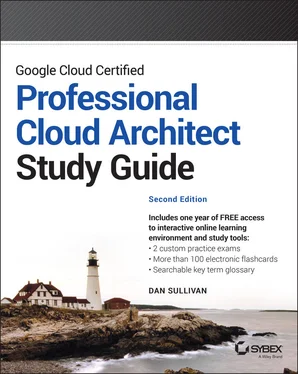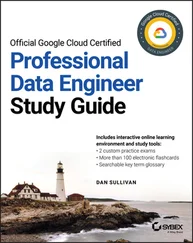Security should be discussed when collecting business requirements. At this stage, it is more important to understand what the business expects in terms of confidentiality, integrity, and availability. We get into technical and implementation details after first understanding the business requirements.
Businesses and other organizations are moving to the cloud because of its value. Businesses can more efficiently develop, deploy, and run applications, especially when they are designed in ways that take advantage of the cloud. Decision-makers typically want to measure the value of their projects. This enables them to allocate resources to the more beneficial projects while avoiding others that may not prove worthwhile. Two common ways to measure progress and success are key performance indicators and return on investment.
Key Performance Indicators
KPIs are a measurable value of some aspect of the business or operations that indicates how well the organization is achieving its objectives. A sales department may have total value of sales in the last week as a KPI, while a DevOps team might use CPU utilization as a KPI of efficient use of compute resources.
Project managers may use KPIs to measure the progress of a cloud migration project. KPIs in that case may include a volume of data migrated to the cloud and no longer stored on-premises, the number of test cases run each day in the cloud instead of on-premises, or the number of workload hours running in the cloud instead of on-premises.
You can see from these examples that KPIs can be highly specific and tailored to a particular kind of project. Often, you will have to define how you will measure a KPI. For example, a workload hour may be defined based on the wall clock time and the number of CPUs dedicated to a workload.
The definition of a KPI should allow for an obvious way to measure the indicator. The details of the definition should be stated early in the project to help team members understand the business objectives and how they will be measured.
Line-of-business managers may use KPIs to measure how well operations are running. These KPIs are closely aligned with business objectives. A retailer may use total sales revenue, while a telecommunications company may monitor reduction in customer churn, in other words, customers taking their business to a competitor. A financial institution that makes loans might use the number of applications reviewed as a measure of how well the business is running.
For architects, it is important to know how the business will measure the success of a project or operation. KPIs help us understand what is most important to the business and what drives decision-makers to invest in a project or line of business.
ROI is a way of measuring the monetary value of an investment. ROI is expressed as a percentage, and it is based on the value of some aspect of the business after an investment when compared to its value before the investment. The return, or increase or loss, after an investment divided by the cost of the investment is the ROI. The formula for ROI is as follows:

The value of investment is measured for a fixed period of time, such as 1 year or 3 years. For example, if a company invests $100,000 in new equipment and this investment generates a value of $145,000 over 3 years, then the ROI is 45 percent over 3 years.
In cloud migration projects, the investment includes the cost of cloud services, employee and contractor costs, and any third-party service costs. The value of the investment can include the expenses saved by not replacing old equipment or purchasing new equipment, savings due to reduced power consumption in a data center, and new revenue generated by applications and services that scale up in the cloud but were constrained when run on-premises.
Success measures such as KPIs and ROI are a formal way of specifying what the organization values with respect to a project or line of business. As an architect, you should know which success measures are being used so that you can understand how the business measures the value of the systems that you design.
The first stages of a cloud project should begin with understanding the business use cases and product strategy. This information sets the context for later work on the technical requirements analysis.
One part of business requirements analysis includes application design and cost considerations. Application design considerations include assessing the possible use of managed services and lower classes of service that cost less than standard services. Data lifecycle management is also a factor in application design.
In addition to business drivers, consider regulations that may apply to your projects. Many regulations are designed to protect individuals' privacy or to ensure the integrity of data to prevent fraud. Compliance with regulations may require additional security controls or application features that otherwise would not be implemented.
Security business requirements can be framed around three objectives: protecting confidentiality, preserving the integrity of data, and ensuring the availability of services, especially with respect to malicious acts that could disrupt services. There may be ancillary security requirements as well. For example, if a company sends a digital purchase order, the recipient should be expected to send a signed acknowledgment proving that they received it. This kind of nonrepudiation requirement may occur with external business processes.
Business and other organizations will often monitor the progress of projects and the efficiency and profitability of lines of business using success measures, such as KPIs and ROI.
Study the case studies: EHR Healthcare, Helicopter Racing League, Mountkirk Games, and TerramEarth. You will have access to the case studies during the exam, but you can save time if you are already familiar with the details of each. Also, think through the implications of the business requirements to understand how they constrain technical solution options.
Understand business terms like total cost of ownership (TCO), key performance indicators (KPIs), and return on investment (ROI). You will almost certainly not have to calculate any of these measures, but you should understand what they measure and why they are used by business executives and analysts.
Learn about Google Cloud Platform managed services and for what purposes they are used. These services can be used instead of deploying and managing applications and managing servers, storage, networking, and so forth. If a business requirement includes using managed services or reducing the workload on a DevOps team, you may be able to use one or more of these services to solve problems presented on the exam.
Understand the elements of data management. This includes how much data will be collected and stored, how long it will be stored, what processing will be applied to it, and who will have access to it.
Читать дальше













